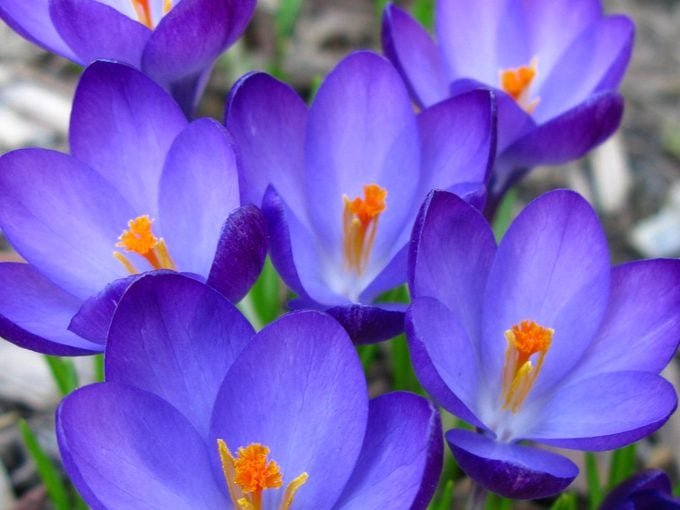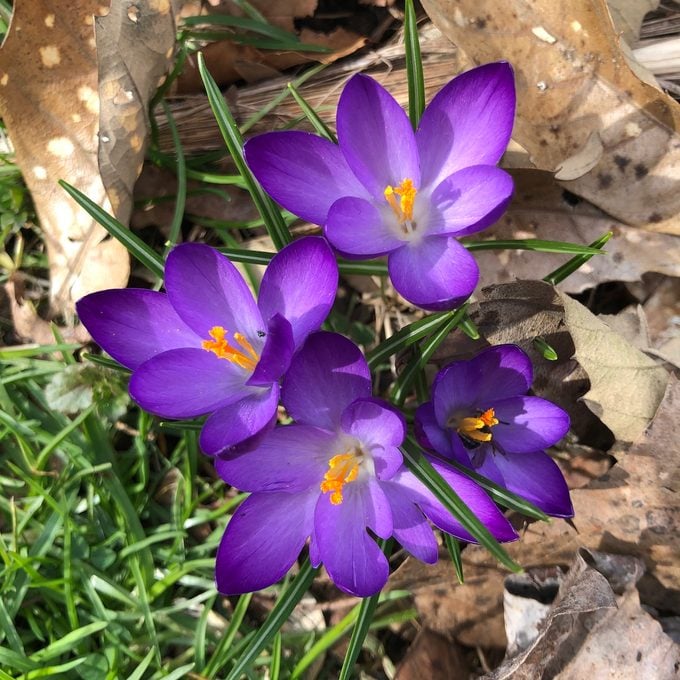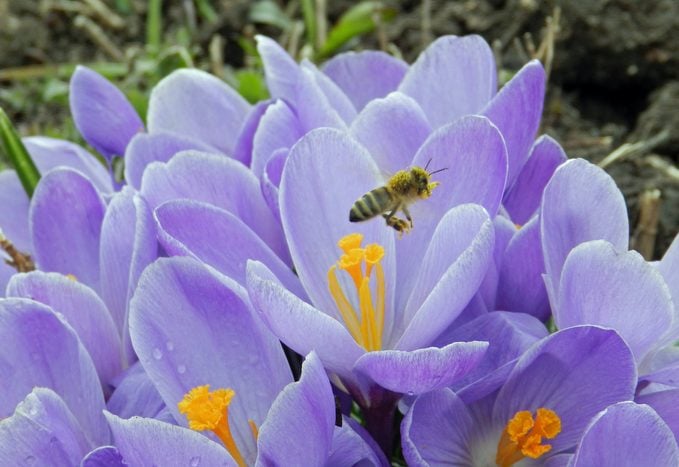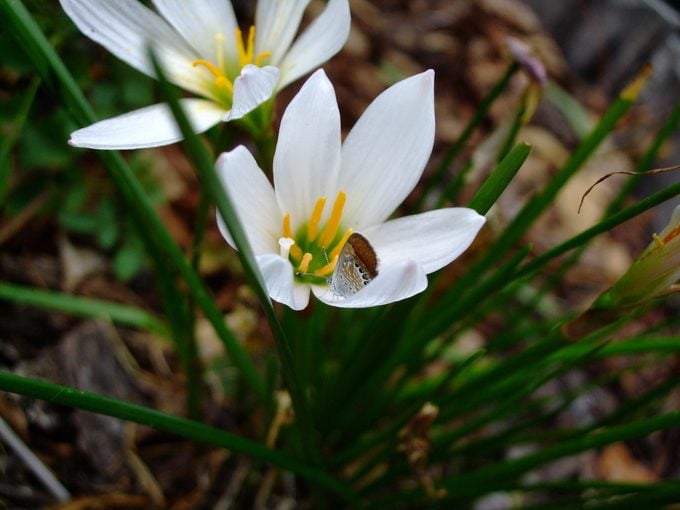Crocus Flower Growing Tips You Need to Know
Updated: Feb. 06, 2023
A crocus flower poking out of the snow is a welcome early sign of spring for gardeners. Learn when to plant crocuses and how they help bees.
Our editors and experts handpick every product we feature. We may earn a commission from your purchases.
Crocus Flower Care

In late winter, keep your eyes peeled for purple, yellow and white crocus flowers poking out of a bed of mulch or beneath a snowy blanket. Plant large drifts of corms in fall for stunning color the next season. This small plant gets lost on its own, so plant crocuses in bulk for best impact. They can even be planted in lawns for naturalization. Space a few inches apart, about 3 to 4 inches deep with the pointed end of the crocus flower bulb up.
Crocus ancyrensis is the earliest bloomer. Plant the cultivar Little Tommies (C. tommasinianus) if you’ve had trouble with squirrels digging up your bulbs in the past. They will likely leave this variety of crocus alone.
- Common name: Crocus
- Scientific name: Varieties include Crocus ancyrensis and C. tommasinianus
- Zones 3 to 8
- Light: Full sun or partial shade
- Soil: Well-drained soil (bulbs will rot in soggy soil)
- Bloom time: In warmer zones, as early as late January or early February, a little later further north.
- Planting time: Fall, before a hard freeze
Learn how and when to plant tulip bulbs.
When to Plant Crocus Flower Bulbs

Plant bulbs once the nighttime temperature drops to a consistent 40 to 50 degrees. Bulbs like daffodils, crocus and alliums all need a full winter in the ground. Plant the bulbs two to three times their height deep and then fertilize.
One of the reasons crocus bulbs are so popular is that they pop up at the first sign of spring, needing little to no maintenance. You can just sit back and enjoy their color peeking out of the snow.
Check out the top 10 bulbs to plant in fall that you aren’t growing yet.
Crocus Pollinator Benefits

Start off spring with a burst of color in the landscape and nectar for the bees. Crocus flowers are known for their strong scent, so they often attract the first bees and other pollinators that emerge from hibernation in early spring.
“I was taking pictures of my spring crocuses and suddenly one of the honeybees we raise on our property decided to step into the picture (above) to collect pollen,” says Birds & Blooms reader Lisa Vokoun.
Crocus Flowers Not Blooming

“I had at least 50 beautiful crocuses two years ago, but last spring only three bloomed. What happened?” —Birds & Blooms reader Karen Drazek
Gardening expert Melinda Myers: Crocuses are a favorite flower for welcoming spring. Unfortunately, they’re also popular with wildlife. Squirrels, chipmunks, voles and mice dig and nibble on crocus corms, and rabbits often dine on the flowers in spring. This may explain the disappearance of your crocus.
Also called Tommies, Crocus tommasinianus is more squirrel resistant than other varieties, but no plant is totally immune. If animal populations are high and food is scarce, even the less desirable plants are fair game. To discourage them from digging and dining, treat the crocus corms with an animal repellent before planting them, and treat the plants as they emerge in spring. Another option is growing more animal-resistant bulbs, such as grape hyacinths, alliums, hyacinths and daffodils. Although certain critters like eating them, it should be noted that crocuses are toxic to horses, dogs and cats.
Next, check out the top 5 deer-resistant bulbs for spring blooms.




















